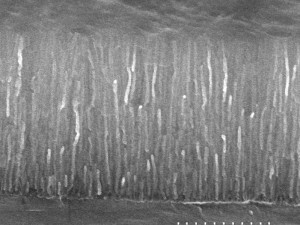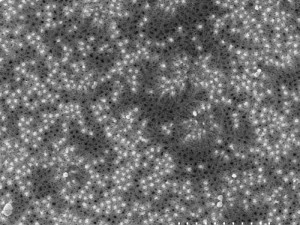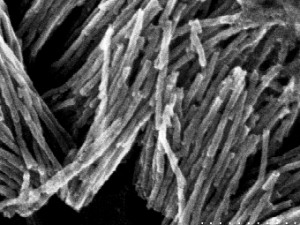Nanoporous Anodic Aluminum Oxide or AAO enables a low-cost bottom-up approach for templated synthesis of uniform and aligned arrays of nanostructures (nanowires, nanotubes, nanodots, etc) that can be integrated into functional devices.
Controllable nanoscale engineering of materials’ structure and chemistry is critical for reducing to practice the full potential of nanotechnology. Among numerous methods and techniques available today, templated deposition into self-organized templates, such as nanoporous AAO, offers some of the best trade-offs in terms of cost vs outcome:
- low cost and high throughput
- precision control of critical dimensions in 1 nm to 500 nm range
- narrow size distribution
- variety of shapes, such as nanodots, nanotubes, nanowires, etc.
- multi-layered (barcoded) and coaxial nanostructures
- nanostructures with modulated pore diameter
- aligned arrays that can be electrically and optically interfaced
- compatibility with micromachining and MEMS.
Deposition of materials inside the pores of AAO was discovered in 1980-s and publicized as a bottom-up approach for templated nanofabrication in the 1990-s. This method could be implemented in a conventional wet lab with relatively low entry barrier in terms of time and cost. It has gained significant recognition among many materials scientists.
Some of the most popular methods to deposit materials inside the pores of the AAO are:
- electrochemical deposition
(see, for example, a video tutorial on Ni nanowire deposition on the University of Wisconsin-Madison Materials Research Science and Engineering Center educational group website) - electroless deposition
- sol-gel deposition
- solution polymerization
- solution precipitation
- chemical vapor deposition
- atomic layer deposition
- gas phase pyrolysis.
A large selection of AAO nanotemplates and accessories for templated nanofabrication is available as a part of InRedox’ Nanofabrication Toolbox.
Electron microscope images of templated nanowire arrays prepared by electrochemical deposition.



